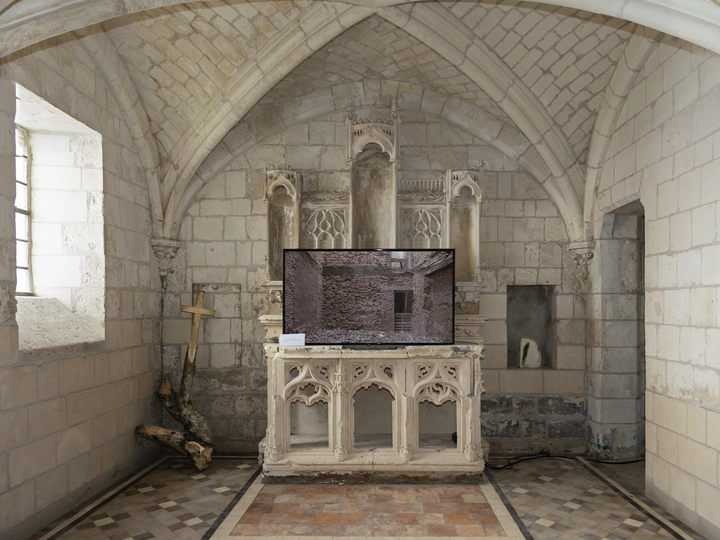La Mérule Pleureuse

Funda Zeynep Ayguler explores the intersection of visual, sonic and linguistic exposition by means of media installations, animations, films, and algorithms. She has background studies in Architecture, graduated from Anadolu University with a degree in Animation. She has studied in master's programs in Media Art and Design at Bauhaus University Weimar and in the Interface Cultures department at the University of Arts and Design Linz.
La Mérule Pleureuse features a series of installations including sculptures made of wood and stone, video, photography, 3d scan, as well as, text crafted through the application of traditional printing press. Halfway between research and contemporary artistic creation, the purpose of this multidisciplinary project is to revisit the restoration of the La Chartreuse de Neuville from the angle of its materials, stone and wood, the surrounding soils as well as the emergence and ongoing mitigation of ’Mérule’ within the building.
The project revolves around studying the natural interplay and coexistence of organisms such as algae and fungi within a human-inhabited environment. The focus lies on examining a specific fungus that thrives in the conditions found within human-constructed habitats. Mérule, scientifically named Serpula Lacrymans, commonly known as dry rot, grows in the timbers and sometimes walls of buildings. It have successfully adapted to and thrive in human-constructed environments, taking advantage of the resources and opportunities provided by humans. However, a complex dynamic emerges as this organism and humans engage in a struggle. This creates an ongoing battle between human desires for order and symmetry and the dynamic presence of resilient organisms that challenge and disrupt established norms.
La Chartreuse de Neuville, a medieval monastery situated in Neuville-sous-Montreuil, France, has been severely damaged by Mérule. The building dates back to the 14th century and is constructed primarily of chalkstone and timber. Over time, the fungus was able to colonize the wooden elements as well as the stone walls of the building, causing significant damage to the structure. Currently, the building is undergoing an extensive restoration process which aims to eradicate the mycelium traces for the third time in the building's history.